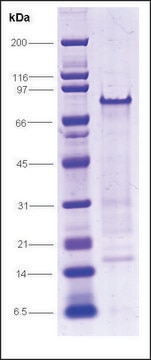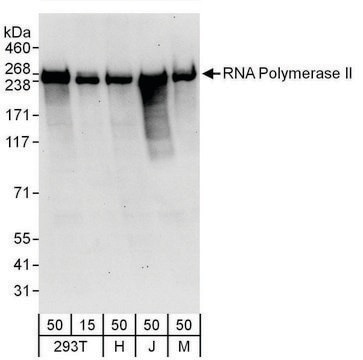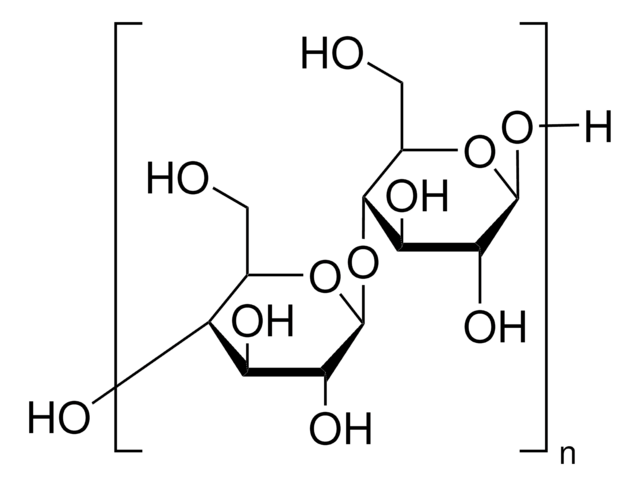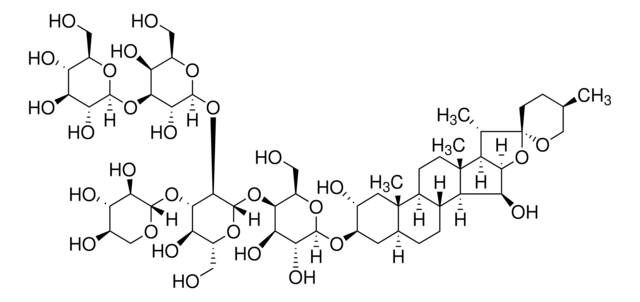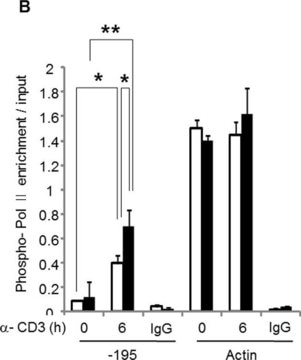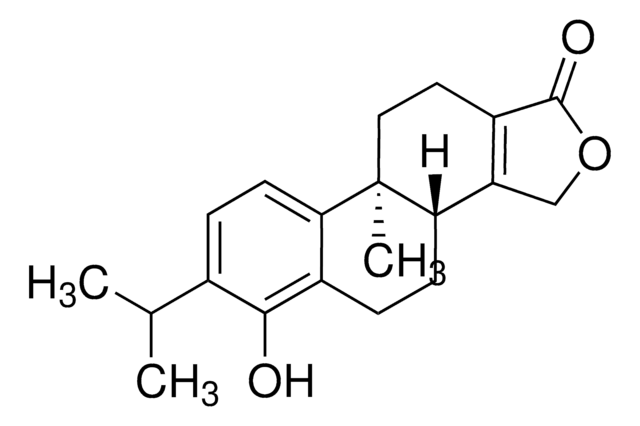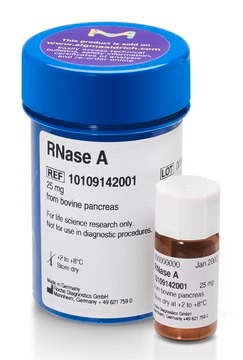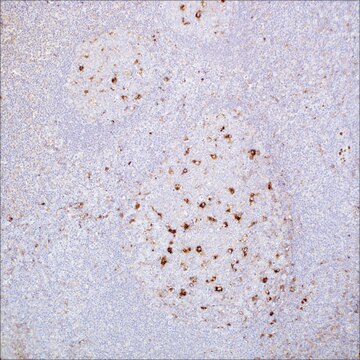SRP2013
RNA Polymerase II, C-terminal human
recombinant, expressed in E. coli, ≥85% (SDS-PAGE)
Synonym(s):
POLRA, RPB1, RPO2, RPOL2, hRPB220
Sign Into View Organizational & Contract Pricing
All Photos(1)
About This Item
UNSPSC Code:
12352200
Recommended Products
biological source
human
recombinant
expressed in E. coli
assay
≥85% (SDS-PAGE)
form
frozen liquid
mol wt
~42.2 kDa
packaging
pkg of 10 μg
storage condition
avoid repeated freeze/thaw cycles
concentration
400 μg/mL
color
clear colorless
NCBI accession no.
UniProt accession no.
shipped in
dry ice
storage temp.
−70°C
Gene Information
human ... POLR2A(5430)
Related Categories
General description
RNA polymerase II (eukaryotic) contains around 10 subunits with a combined molecular weight of 500,000Da. The subunit structure of this enzyme is conserved amongst eukaryotes, and this subunits structure shares similarities with that of RNA pol I and III. The carboxy-terminal repeat domain (CTD) of the largest subunit of RNA pol II contains tandem repeats of a heptapeptide sequence Tyr-Ser-Pro-Thr-Ser-Pro-Ser which is highly conserved among eukaryotic organisms.
Biochem/physiol Actions
The carboxy-terminal repeat domain (CTD) of the largest subunit of RNA pol II contains tandem repeats of a heptapeptide sequence Tyr-Ser-Pro-Thr-Ser-Pro-Ser which is highly conserved among eukaryotic organisms. There are two forms of RNA pol II in vivo, designated IIO, which is extensively phosphorylated at the CTD, and IIA, which is not phosphorylated. The IIA form preferentially enters the pre-initiation complex (PIC), whereas IIO is found in the elongating complex. The kinase activity of TFIIH can mediate CTD phosphorylation, although other kinases, including Cdc2, Ctk1, the Srb10-Srb11 kinase-cyclin pair, and P-TEFb, have also been implicated in CTD phosphorylation. A phosphatase responsible for the dephosphorylation of the CTD has also been identified. CTD phosphatase activity is regulated by TFIIB and TFIIF. The CTD has also been implicated in pre-mRNA processing, most likely functioning as a platform for the recruitment and assembly of factors involved in pre-mRNA processing.
Physical form
Clear and colorless frozen liquid solution
Preparation Note
Use a manual defrost freezer and avoid repeated freeze-thaw cycles. While working, please keep sample on ice.
Storage Class
10 - Combustible liquids
wgk_germany
WGK 1
flash_point_f
Not applicable
flash_point_c
Not applicable
Certificates of Analysis (COA)
Search for Certificates of Analysis (COA) by entering the products Lot/Batch Number. Lot and Batch Numbers can be found on a product’s label following the words ‘Lot’ or ‘Batch’.
Already Own This Product?
Find documentation for the products that you have recently purchased in the Document Library.
Evolution of the RNA polymerase II C-terminal domain.
Stiller JW and Hall BD
Proceedings of the National Academy of Sciences of the USA, 99(9), 6091-6096 (2002)
4 Carboxy-terminal Domain of the Largest Subunit of Eukaryotic RNA Polymerase II.
Corden JL and Ingles CJ
Cold Spring Harbor molecular case studies, 81-107 (1992)
T O'Brien et al.
Nature, 370(6484), 75-77 (1994-07-07)
The carboxy-terminal domain (CTD) of the large subunit of RNA polymerase II is essential in vivo, and is found in either an unphosphorylated (IIa) or hyperphosphorylated (IIo) form. The Drosophila uninduced hsp70 and hsp26 genes, and the constitutively expressed beta-1
H Lu et al.
Proceedings of the National Academy of Sciences of the United States of America, 88(22), 10004-10008 (1991-11-15)
The two forms of RNA polymerase II that exist in vivo, phosphorylated (IIO) and nonphosphorylated (IIA), were purified to apparent homogeneity from HeLa cells. The nonphosphorylated form preferentially binds to the preinitiation complex. RNA polymerase II in the complex was
RNA polymerase II carboxy-terminal domain kinases: emerging clues to their function.
Prelich G
Eukaryotic Cell, 1(2), 153-162 (2002)
Our team of scientists has experience in all areas of research including Life Science, Material Science, Chemical Synthesis, Chromatography, Analytical and many others.
Contact Technical Service